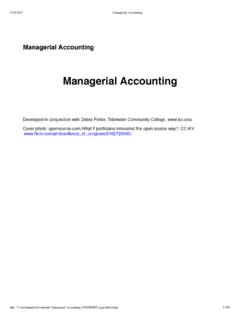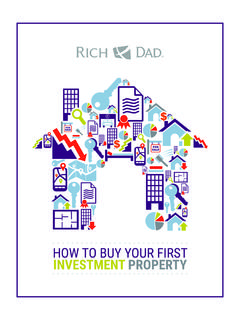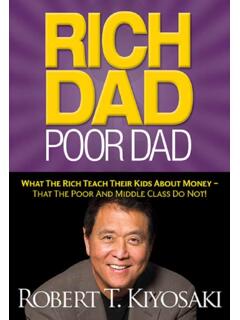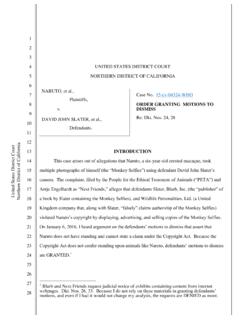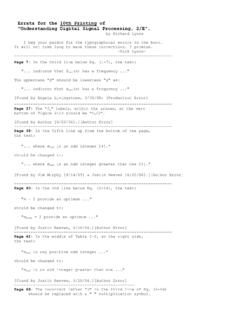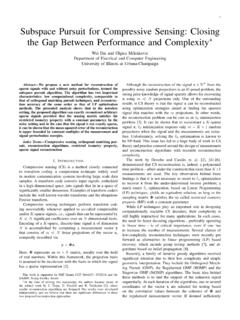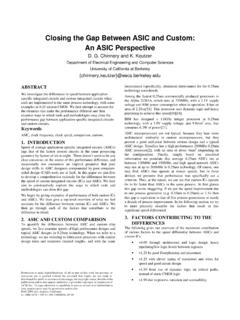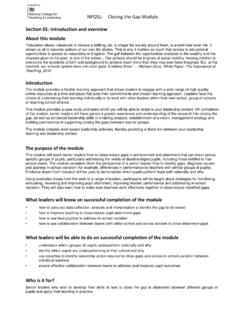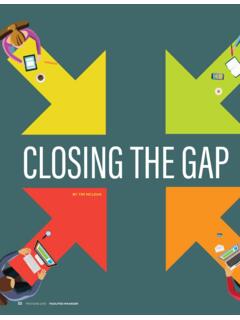Transcription of Closing the Gap - Amazon S3
1 1 Closing the GapClosing the GapClosing the GapClosing the Gap The gap between young people s views about sustainability and the school system s potential to provide sustainable education Shan Oakes April 2007 (number of words: 16327) Dissertation submitted as course requirement for the MSc in Education for Sustainability, London South Bank University 2 Key words: young people s views; education; schools; sustainability; future; democracy; children s rights, school councils; global citizenship; every child matters; power; spirituality, choice, participation , inclusivity, critical thinking, humanity, emotion, intuition Abstract Over 200 young people in East Yorkshire, UK gave their views.
2 Young people between the ages of 7 and 16 in 8 schools, and the RAPP, Hull, talked about sustainability and how schools could model it. Reference was made to Sustainable Schools for pupils, communities and the environment (sspce, DFES, 2006). Ofsted says sustainability should now be central in schools. Taking account of the limitations to imagination caused by the fact that young people in school are already ensconced inside the institutions of a system that needs changing, the young people I met clearly agree on the need for sustainability to be central: they care about fairness, compassion, inclusivity and discursive approaches.
3 Fundamental elements in the school system, however, are pulling in the opposite direction. These elements are not emanating from individual schools or teachers, who, like children, are victims of the system. Rather, they are government education policy priorities and their consequences. Teachers are usually struggling heroically to close this gap. The contrast was stark between the pro7sustainability views of the young people and the unsustainability of the education system.
4 So the research refocused on the gap itself: what is stopping schools being models of sustainability or, in other words, what needs to change if schools are to be free to promote sustainability? Symptoms of the problem include: the seminary model, teachers and students under extraordinary pressure to perform , focus on assessment7orientated curriculum, inflexible contracts or job descriptions, ineffective school councils, and inordinate tensions due to time constraints.
5 Less obvious but equally significant and pervasive factors include the hidden curriculum based on anachronistic expectations and practices, power differentials and lack of democracy, Underlying these symptoms, is a long7standing suite of attitudes in western culture relating to children, schools, what education is for, and what is important in people s lives. These are reflected in UK home and foreign policy. It is the unsustainability in the world outside schools that makes it extremely difficult for teachers seriously to address underlying issues.
6 It is currently easier, therefore, for outsiders to challenge this country s dominant paradigm (which seems to be based on nothing more laudable than property, oil, and militarism). 3 This research points to the necessity for our society seriously to examine its attitudes towards children and the aims of education. We need to cede power to children. We need children s vision to help us develop not only a new appropriate model of education, but also a new model for relating to each other and the rest of the world.
7 We need to LISTEN to children and invite them into a dialogue about the whole business of how we live our lives. Acknowledgements Many thanks to all the young 7 and less young 7 people involved 4 1. Introduction The 200677 academic year is the UK year of Action on Sustainable Development for Schools, following the consultation on the sustainable schools strategy (DFES 2006b). We are 2 years into the UN Decade of Education for Sustainability initiated by the 2002 Johannesburg World Summit on Sustainability.
8 This research is concerned with the tension between the concepts of education, sustainability, and children. The enormity of these concepts explains the high number of footnotes giving support, illustration or explanation. Motivation The motivation for this work stems from my personal and professional experience working in or with education, and horror at a system which misguidedly imposes such pressure on children and their teachers1. There is much focus and expenditure on the symptoms of the problems in education and hardly any on the underlying causes2.
9 This research is concerned with attitudes underlying policy and in particular the attitudes towards children which stop them being equal partners in designing a sustainable future. I wanted to test my belief that children do care very much about their future and want changes to happen so that the future is one they can look forward to. Children, the direct users of the education system, are rarely asked to comment or evaluate the system in which they are compulsorily immersed for more than a decade3.
10 Considering that the system seems to be designed on a market model4 perhaps it is not surprising that children s views are not invited, since children do seem to come, as Wordsworth said, trailing clouds of glory 5 and, when asked, do challenge that business model. 1 between 1990 and 1995 there was a 450 per cent increase in the rate of exclusions of children from to the Children s Society, pressure on schools to paint a good picture of themselves in the market place has led to non7conformist pupils being excluded more readily than hitherto (Chaudhary 1998, p7) Anne Sinclair Taylor in Lewis and Lindsay (2000)
